

[Photo provided to China Daily]
In the fresco, the flying Apsaras and the gods and goddesses in charge of song and dance play supporting roles.
"This piece from the No 320 Cave from the Tang Dynasty (AD 618-907) is very gorgeous. It is well preserved and has very rich content like various kinds of musical instruments, including flutes and the pipa (a four-stringed Chinese lute). The gestures of the flying Apsaras are very beautiful, too," he says.
In AD 366, a monk named Lezun arrived in Dunhuang and dug the first cave. And in more than 1,000 years of Chinese history, worshippers from different dynasties came to the place, leaving 45,000 square meters of frescoes and more than 2,000 colored sculptures in the 735 caves that have been discovered.
In its long history, the Mogao Grottoes was a place where people could seek comfort and express gratitude, until the Ming Dynasty (1368-1644) when Dunhuang was not part of the empire.
As Buddhism came from India, the early images of the flying Apsaras seem more Indian. But gradually, ancient Chinese painters added more local elements to their work.
 |  |
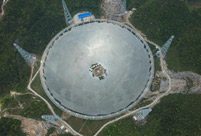 Five made-in-China hi-tech breakthroughs
Five made-in-China hi-tech breakthroughs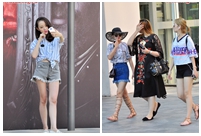 Beijing Style: Hot pants
Beijing Style: Hot pants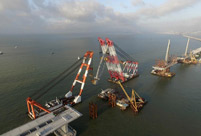 HK-Zhuhai-Macao Bridge to open to traffic
HK-Zhuhai-Macao Bridge to open to traffic China opens its first combined transport service to Nepal
China opens its first combined transport service to Nepal Students take stylish bikini graduations photos
Students take stylish bikini graduations photos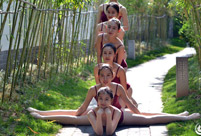 Charming dancing students pose for graduation photos
Charming dancing students pose for graduation photos Guizhou, Yunnan section of Shanghai-Kunming railway connected
Guizhou, Yunnan section of Shanghai-Kunming railway connected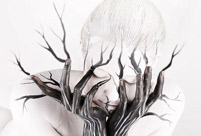 Naked models transformed into landscapes, birds and even DRAGONS by body painting artist
Naked models transformed into landscapes, birds and even DRAGONS by body painting artist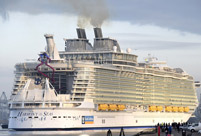 World’s biggest cruise ship Harmony of the Seas to start maiden voyage
World’s biggest cruise ship Harmony of the Seas to start maiden voyage Top 20 hottest women in the world in 2014
Top 20 hottest women in the world in 2014 Top 10 hardest languages to learn
Top 10 hardest languages to learn 10 Chinese female stars with most beautiful faces
10 Chinese female stars with most beautiful faces China’s Top 10 Unique Bridges, Highways and Roads
China’s Top 10 Unique Bridges, Highways and Roads Dog lovers ready rescue missions
Dog lovers ready rescue missions How China’s debt collectors go to work
How China’s debt collectors go to work Albright US rebalance not about limits, containment
Albright US rebalance not about limits, containment Wealthy Chinese children take class to learn Western table manners
Wealthy Chinese children take class to learn Western table mannersDay|Week